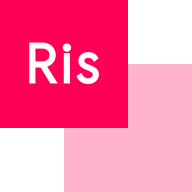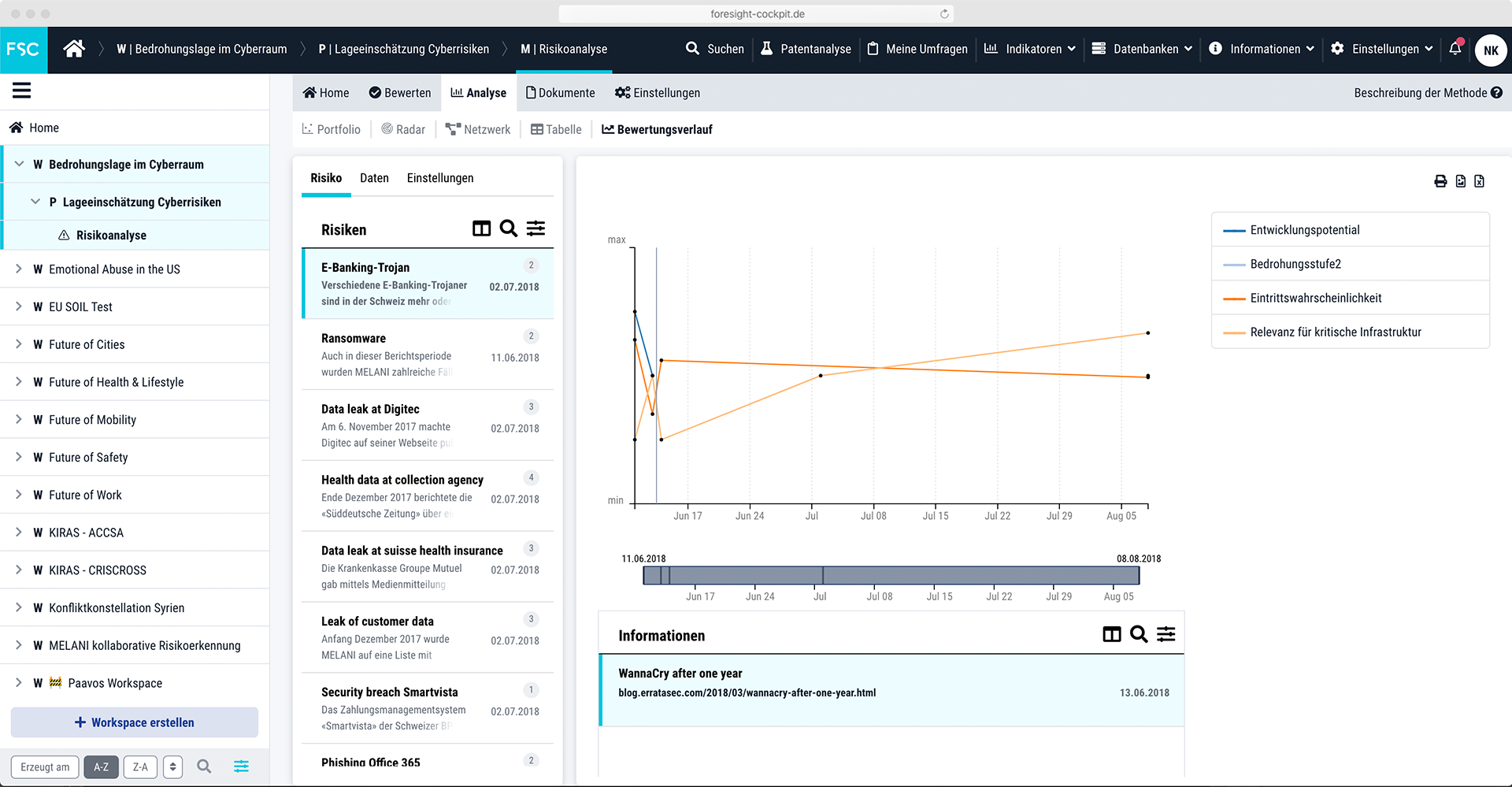Risk Management
Our Risk Heat approach
-
40PreventDetermine risk profiles for identification.
-
30ReduceEvaluate risks and their impacts.
-
20Lay-offCounter measure and define strategies.
-
10AcceptMonitor risk for early warning detection.
What is Risk Management?
The Foresight Strategy Cockpit risk management module
Collaborative risk management
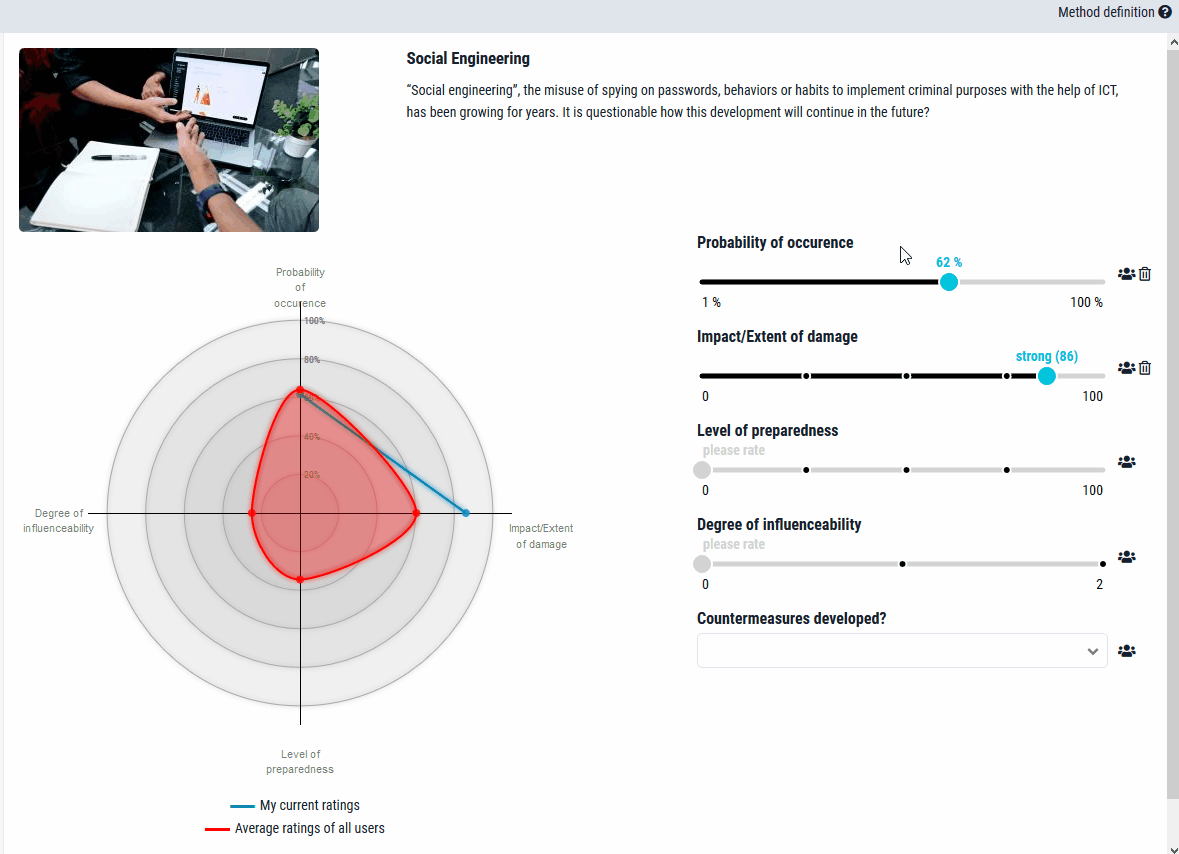
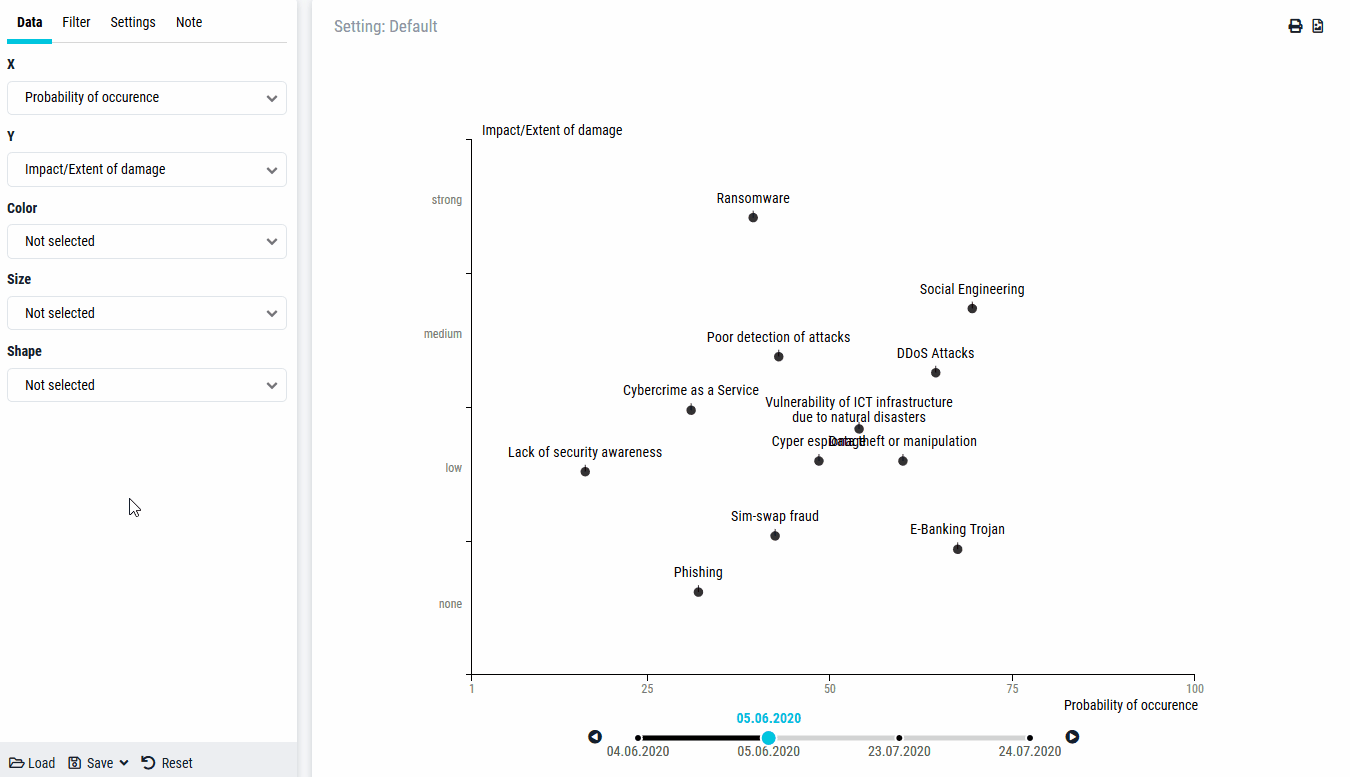
Early crisis detection
Designed for your team to create futures
Summary
Changes are a constant in everyday life. This is true for people as well as companies. While not everything is always within our own control, one thing we can do, is to prepare ourselves in the best possible way – both as individuals and as an organisation. In specific terms, this can be achieved by means of risk management or risk analysis. These are important project management procedures that ensure that as few problems as possible occur during a project implementation. It helps to identify the main risks and define how to deal with them. Above all, it is important to become aware of each risk and to ensure that it is adequately managed. The probability of occurrence defines how big a threat is.
Providing an overview
Measures, methods and processes must be defined for each potential risk. In the event of an emergency, their activation is crucial in order to minimise the damage and to be able to meet the company's operational goals in the long term. For this purpose, a wide variety of tools can be systematically used in the risk management process.
A suitable tool in this context is a dashboard or cockpit such as offered within the Foresight Strategy Cockpit (FSC), which provides the risk manager or project management team with the necessary overview. By centrally recording all relevant data and processes, it enables companies to react to threats in a timely manner and thus to reduce future risks.
Frequently asked questions and answers
Risk management software helps companies identify, analyze, assess, and monitor potential risks. It enables the management of various types of risks, including financial, strategic, or operational risks. Our Foresight Strategy Cockpit (FSC) serves as dependable risk management software by aiding in the identification, monitoring, and control of risks. This allows companies to respond quickly to changes and ideally avoid risks altogether.
In today's dynamic business environment, risks can arise from anywhere - whether it's financial fluctuations, regulatory changes, or technological advancements. Risk management software, like the Foresight Strategy Cockpit (FSC), helps companies identify these risks early, assess them, and take appropriate countermeasures.
The FSC combines data and expert knowledge in a collaborative environment to manage every risk scenario. It includes an indicator and risk database as well as access to media analysis to monitor developments in real-time. This provides companies with the opportunity to react agilely and proactively to changes.
Traditional risk management methods often rely on manual processes and are time-consuming. Modern risk management software automates many of these processes, provides real-time information, and facilitates collaborative work. As a result, risks can be identified more quickly, and necessary measures can be implemented more efficiently.
The assessment of risks is fundamental for companies and their management to evaluate the safety of their own projects, processes, facilities and strategies. Only those who know the probability of occurrence and take measures to identify and control risks have a prospect of success. Threats can never be completely prevented but accurate assessments can minimise their impacts and prevent damage in the event of an emergency. This requires, above all, a holistic identification of risks and the correlation between individual factors. Those who identify potential dangers can create more successful opportunities for their organisation and a better and long-term outlook
An integrated risk management helps to identify risks and recognise dangers as a tool supported by the company management. The risk management process is a clearly defined method for understanding what opportunities and risks exist, how they might affect a project or organisation along with its business objectives, and what actions can be taken to respond to them. Components of risk management are:
1. Risk identification: The first step in the risk management process is to identify all events that may have a negative (risk) or positive (opportunity) impact on the objectives of the project. All items are compiled in a risk matrix. This should be done as precisely and detailed as possible to avoid damage in the future.
2. Risk assessment: Risk management knows two types of risks: qualitative and quantitative risks. In a qualitative assessment, the degree of criticality is analysed based on the probability and impact of the event. A quantitative assessment analyses the financial impact or value of the event. Both are essential for a comprehensive assessment of risks and opportunities.
3. Risk management: To manage risks, an organisation must first define its strategies for dealing with risks. A strategy is developed, and measures are defined. The aim of the resulting risk treatment plan is to reduce the likelihood of the risk occurring and to reduce the impact of the risk.
4. Risk monitoring and reporting: The opportunities and risks and the corresponding treatment plans must be monitored. Documentation ensures traceability. How often this is done depends on the criticality of the risk. Based on this analysis, a company's processes can then be refined and adapted on a continuous basis.
Potential risks can be clustered into different categories. These include corporate risks, operational risks, financial risks or compliance risks. Risks to a company's reputation or project risks can also lead to immense damage and even compromise the future of a company. In identifying, analysing, systematically assessing and managing these risks in a simple and timely manner, it is important to focus on the four fundamental pillars of every company.
1. People risks: People always contribute to the performance of a company, positively or negatively. They pose opportunities and risks. Risks related to people can impact - or cause - virtually every other risk within an organisation. Such is the case with compliance risks, where someone within an organisation inadvertently or intentionally fails to comply with certain regulations, standards, norms or other benchmarks and requirements. In practice, this has negative consequences for business processes and can lead to reputational damage. 2. Process risks: In the fundamentals of risk management, there is repeated talk of process risks. With good reason: If important business processes are not carried out properly, this almost invariably leads to a strategic risk for a company. Especially in times of increasingly complex processes and operational procedures, it is important to analyse every process component both internally and externally.
2. Process risks: In the fundamentals of risk management, there is repeated talk of process risks. With good reason: If important business processes are not carried out properly, this almost invariably leads to a strategic risk for a company. Especially in times of increasingly complex processes and operational procedures, it is important to analyse every process component both internally and externally.
3. Technological risks: The introduction of new technologies is always associated with opportunities and risks. Technologies can make a project a success, but they can also make implementation more difficult or even jeopardise security. Cyber security in particular is a crucial factor for companies. The growing number of data thefts and other cyber-attacks is one of the major risks for companies in the age of digitalisation.
4. Location-related risks: Changes in the world of work and advances in technology are making hybrid workforces a reality. Remote work or home office arrangements are starting to become a rule rather than an exception. This is an opportunity for companies, but it also poses risks. It raises the question of how long a large proportion of employees can work remotely without the face-to-face collaboration that an office environment brings. In addition, every mobile access point is also a potential gateway for malware.
